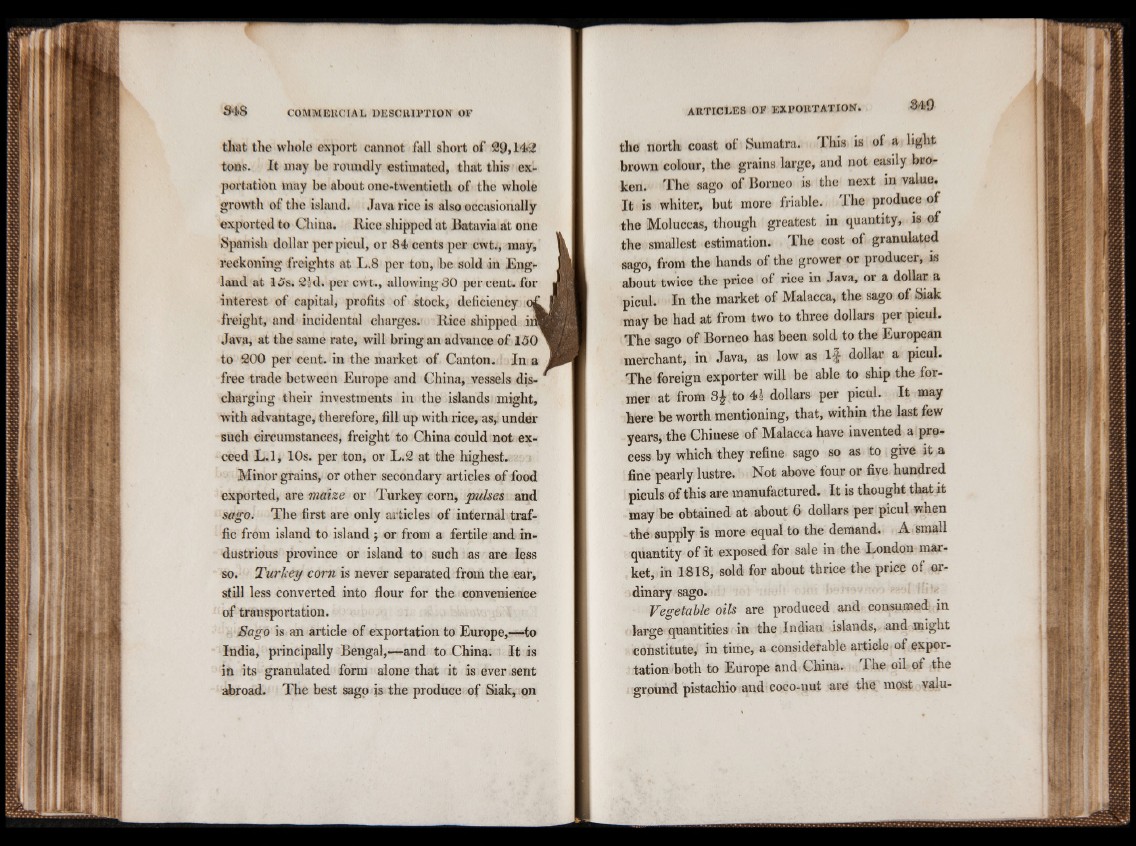
that the whole export cannot fall short of 29,142
tons. It may be roundly estimated, that this exportation
may be about one-twentieth of the whole
growth of the island. Java rice is also occasionally
exported to China. Rice shipped at Batavia at one
Spanish dollar per picul, or 84 cents per cwt., may,
reckoning freights at L.8 per ton, be sold in England
at 15s. c2kl. per cwt., allowing 80 per cent, for
interest of capital, profits of stock, deficiency of
freight, and incidental charges. Rice shipped in
Java, at the same rate, will bring an advance of 150
to 200 per cent, in the market of Canton. In a
free trade between Europe and China, vessels discharging
their investments in the islands might,
with advantage, therefore, fill up with rice, as, under
such circumstances, freight to China could not exceed
L.1, 10s. per ton, or L.2 at the highest.
Minor grains, or other secondary articles of food
exported, are maize or Turkey corn, pulses and
sago. The first are only articles of internal traffic
from island to island ; or from a fertile and industrious
province or island to such as are less
so. Turkey corn is never separated from the ear,
still less converted into flour for the convenience
of transportation.
Sago is an article of exportation to Europe,—to
India, principally Bengal,—and to China. It is
in its granulated form alone that it is ever sent
abroad. The best sago is the produce of Siak, on
the north coast of Sumatra. This is of a light
brown colour, the grains large, and not easily broken.
The sago of Borneo is the next in value.
It is whiter, but more friable. The produce of
the Moluccas, though greatest in quantity, is of
the smallest estimation. The cost of granulated
sago, from the hands of the grower or producer, is
about twice the price of rice in Java, or a dollar a
picul. In the market of Malacca, the sago of Siak
may be had at from two to three dollars per picul.
The sago of Borneo has been sold to the European
merchant, in Java, as low as I f dollar a picul.
The foreign exporter will be able to ship the former
at from Sf to 41 dollars per picul. It may
here be worth mentioning, that, within the last few
years, the Chinese of Malacca have invented a process
by which they refine sago so as to give it a
fine pearly lustre. Not above four or five hundred
piculs of this are manufactured. It is thought that it
may be obtained at about 6 dollars per picul when
the supply is more equal to the demand. A small
quantity of it exposed for sale in the London market,
in 1818, sold for about thrice the price of ordinary
sago. Vegetable oils are produced and consumed in
la r g e quantities in the Indian islands, and might
constitute, in time, a considerable article of exportation
both to Europe and China. The oil of the
ground pistachio and coco-nut are the most valu